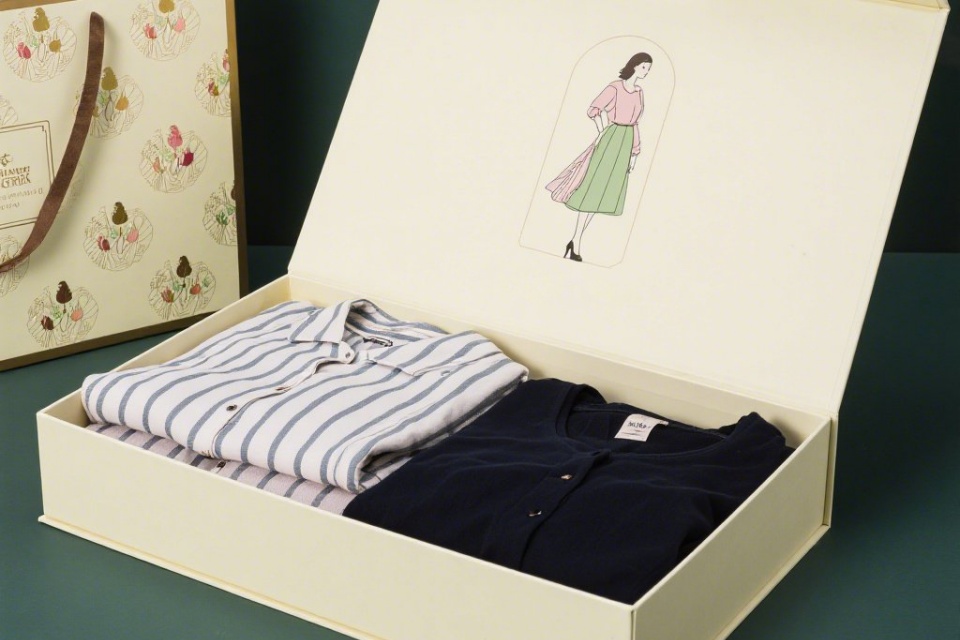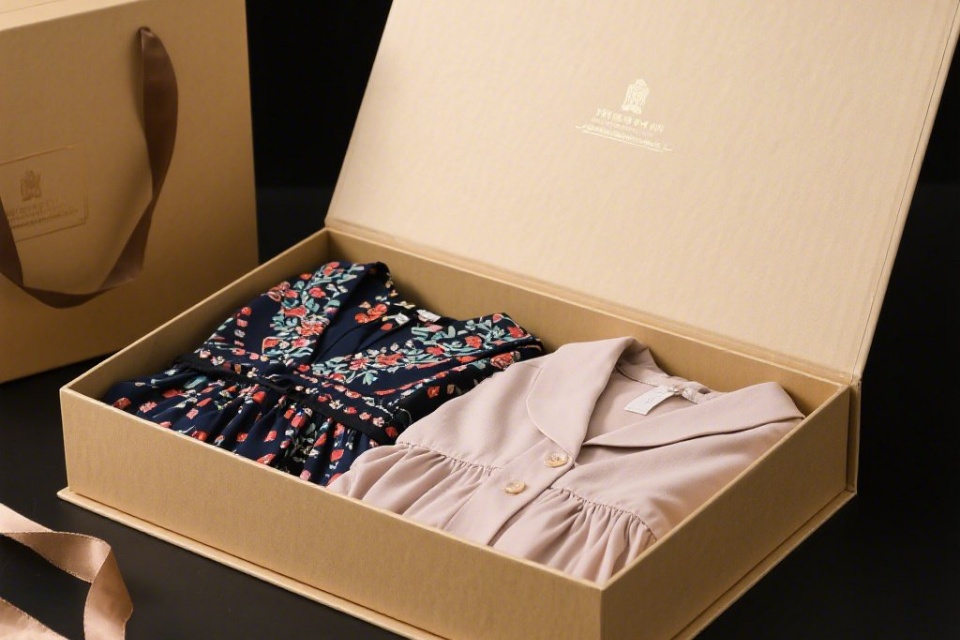Industry News
Sustainable Fashion Packaging Solutions
Sustainable Fashion Packaging Solutions
Summary
Sustainable fashion packaging solutions encompass a range of innovative strategies and materials aimed at reducing the environmental impact of packaging within the fashion industry. As consumer awareness of environmental issues has surged, the fashion sector faces increasing pressure to adopt sustainable practices, prompting a shift from traditional packaging methods that often rely on non-renewable resources to more eco-friendly alternatives. This transition is not only critical for mitigating waste and pollution but also for enhancing brand reputation and meeting consumer demands for responsible practices.
Notably, sustainable packaging practices have evolved significantly in recent years, influenced by regulatory pressures and the rise of "conscious consumers" who prioritize eco-friendly options in their purchasing decisions. Research indicates that a substantial portion of consumers are willing to pay more for brands that prioritize sustainability, illustrating the growing importance of environmentally responsible packaging as a core component of brand identity and consumer trust. This focus on sustainability has led to a burgeoning market for recyclable, biodegradable, and innovative materials, all of which aim to minimize the ecological footprint of fashion packaging.
Despite the positive strides made in sustainable packaging, challenges remain. Brands often grapple with the higher costs associated with eco-friendly materials, the need for packaging to meet performance standards, and the complexities of educating consumers on proper disposal methods. Furthermore, navigating global supply chain logistics complicates the implementation of consistent sustainable practices across different regions, underscoring the importance of a comprehensive approach to sustainability in packaging solutions.
As the fashion industry continues to embrace sustainability, the future of packaging appears increasingly innovative and eco-conscious. Ongoing advancements in materials and design, coupled with evolving regulatory frameworks, are expected to drive further changes in sustainable fashion packaging practices, paving the way for a more responsible and circular economy within the sector.
History of Fashion Packaging
Evolution of Packaging in Fashion
The history of packaging in the fashion industry has undergone significant transformations, reflecting broader societal changes and consumer demands. Traditionally, packaging was primarily functional, designed to protect and contain products during transport. However, as the fashion industry evolved, so did the role of packaging, which began to encompass marketing and branding aspects as well.
In the early 20th century, fashion packaging typically consisted of simple paper or cardboard boxes. As retail environments expanded and brands sought to differentiate themselves, packaging began to incorporate more creative designs and branding elements. The introduction of colorful printed materials and the use of logos helped to enhance the consumer experience and build brand loyalty.
Rise of Sustainable Practices
As concerns regarding environmental impact grew, particularly from the late 20th century onward, the fashion industry began to face scrutiny over its packaging practices. Conventional packaging methods often relied on non-renewable resources and generated significant waste, leading to calls for more sustainable alternatives. This shift coincided with a growing consumer awareness of environmental issues, prompting brands to reassess their packaging strategies.
In recent years, the fashion industry has made strides towards sustainable packaging solutions, driven by both regulatory pressures and consumer preferences for eco-friendly practices. According to a 2021 report, a significant percentage of consumers expressed that sustainable packaging is crucial to their purchasing decisions, with many indicating a willingness to pay more for brands that prioritize eco-friendly materials. This trend highlights a pivotal shift towards sustainability in packaging, transforming it into a critical component of brand identity and consumer trust.
Innovations in Sustainable Packaging
The late 2010s and early 2020s marked a notable period of innovation in sustainable packaging within the fashion sector. Brands began to explore various eco-friendly materials such as biodegradable plastics, recycled paper, and compostable options. These innovations not only aimed to reduce environmental impact but also to resonate with consumers who prioritize sustainability in their purchasing habits.
Moreover, the concept of the circular economy gained traction, encouraging brands to adopt practices that minimize waste and promote recycling and reuse of packaging materials. As a result, companies began optimizing package sizes to reduce shipping volume and carbon footprints, aligning their packaging strategies with broader sustainability goals.
The Future of Fashion Packaging
Looking ahead, the future of fashion packaging appears increasingly focused on sustainability. The fashion industry's commitment to environmental stewardship continues to grow, with brands striving to balance aesthetic appeal with ecological responsibility. As sustainable practices become more ingrained in consumer expectations, the fashion packaging landscape is poised to evolve further, reflecting ongoing innovations and the necessity of addressing environmental concerns.
Types of Sustainable Packaging Materials
Sustainable packaging encompasses a variety of materials designed to reduce environmental impact while effectively containing and protecting products. These materials can be broadly categorized into several types, each with its own benefits and applications.
Recyclable Materials
Recyclable materials are essential in the effort to minimize waste. Commonly used materials include recyclable PET and HDPE plastics, cardboard, and paper, all of which can be reprocessed into new items. Aluminum is particularly notable for its sustainability, as it can be recycled indefinitely without degrading in quality. Although recyclable packaging may not always be inherently sustainable, it represents a valuable starting point in transitioning to eco-friendlier practices.
Biodegradable and Compostable Materials
Biodegradable packaging is designed to break down naturally over time. Materials such as paper, cardboard, and bamboo fall into this category, although their sustainability can vary. Compostable materials, a more specific subset, are engineered to decompose in composting environments, thus contributing to soil health. Many emerging bio-based plastics aim to replace conventional plastic packaging, although it's vital to ensure local waste management facilities can accommodate these materials.
Plant-Based Plastics
Bioplastics, made from renewable biomass sources like corn and sugarcane, are gaining popularity due to their reduced reliance on fossil fuels and lower carbon footprints. These materials decompose more rapidly than traditional plastics, making them an appealing alternative for various applications, including packaging peanuts and bags.
Reusable Packaging
Reusable packaging, such as glass containers and fabric bags, significantly reduces the need for single-use products. These options lower energy and water use while minimizing waste production. However, their environmental benefits are realized only after multiple uses, and creating effective reuse programs can be complex.
Innovative Materials
A range of innovative materials is emerging as alternatives to traditional packaging. For instance, mushroom packaging is made from agricultural waste and offers a biodegradable and compostable solution. Seaweed packaging is another exciting development, which is fully biodegradable and, in some instances, edible, providing a unique option for food packaging and demonstrating a brand's commitment to sustainability.
Benefits of Sustainable Packaging
Sustainable packaging offers a multitude of advantages that extend beyond environmental considerations, impacting economic performance, brand reputation, and consumer loyalty.
Environmental Impact
One of the most significant benefits of sustainable packaging is its positive effect on the environment. By utilizing materials such as recycled paper, cardboard, and plant-based plastics, companies can significantly reduce their carbon footprint and mitigate pollution. Traditional packaging materials like plastic contribute to waste and pollution, whereas sustainable alternatives promote a circular economy through recycling and composting processes, ultimately leading to less environmental degradation.
Economic Gains
Research indicates that businesses adopting sustainable practices can experience enhanced financial performance. The Harvard Business Review reports that sustainable businesses generally see greater financial gains compared to their less sustainable counterparts, largely due to an increase in consumer demand for eco-friendly products. In fact, products with sustainability claims accounted for 16.6% of U.S. consumer packaged goods sales in 2018, marking a 14.3% increase since 2013. Moreover, a Nielsen study showed that 73% of consumers globally are willing to alter their consumption habits to reduce environmental impact, indicating a lucrative market for sustainable products.
Brand Reputation and Customer Loyalty
Adopting sustainable packaging can significantly enhance a brand's public image and customer loyalty. Consumers are more likely to support brands they perceive as socially responsible and committed to sustainability. This positive perception fosters trust and a sense of community among consumers, leading to long-term loyalty. Additionally, brands that engage in recycling programs or offer incentives for returning packaging can further strengthen their relationships with customers while promoting sustainable behavior.
Regulatory Compliance and Competitive Advantage
As environmental regulations become more stringent, utilizing sustainable packaging can help companies comply with emerging regulations and avoid potential penalties. Many consumer goods companies are increasingly committing to ambitious sustainability targets, such as reducing carbon emissions as outlined by initiatives like the Science Based Target Initiative (SBTi). Brands that proactively adopt sustainable packaging can thus gain a competitive edge in the marketplace.
Innovation and Efficiency
Sustainable packaging is not solely about the materials used; it also involves innovative design approaches that optimize packaging efficiency. For example, minimalist packaging reduces unnecessary layers, decreasing waste and enhancing brand aesthetics. Such innovations can lead to cost savings through reduced material use and transport weight, as demonstrated by companies like Hewlett-Packard, which significantly lowered its carbon emissions through optimized packaging.
Challenges in Implementing Sustainable Packaging
Implementing sustainable packaging presents a variety of challenges that businesses must navigate to achieve their environmental goals. These challenges encompass cost considerations, performance requirements, consumer education, and complexities in supply chain logistics.
Cost Considerations
One of the primary challenges is the higher initial cost associated with sustainable materials. Sustainable options, such as bioplastics and recycled paper, can be approximately 15% or more expensive than traditional materials derived from petroleum. Although prices are gradually decreasing due to increasing demand, companies often find it difficult to balance these costs with their overall budget constraints. However, businesses can offset these expenses through improved operational efficiencies and reduced waste management costs over time.
Performance Requirements
Sustainable packaging must also meet the necessary performance standards to ensure product protection and quality maintenance. It is crucial for packaging to adequately safeguard the contents during transport and storage, as inadequate packaging could lead to increased returns or damaged goods. Striking the right balance between sustainability and performance remains a key concern for manufacturers.
Consumer Education
Educating consumers on the proper disposal and recycling of sustainable packaging is another significant hurdle. Many consumers lack awareness regarding the end-of-life options for packaging materials, which can hinder recycling efforts and contribute to landfill waste. Companies must effectively communicate the benefits and appropriate disposal methods of sustainable packaging to promote responsible consumer behavior.
Supply Chain Complexities
The complexities of global supply chains also pose challenges in the implementation of sustainable packaging solutions. Companies often face difficulties in standardizing recyclable materials across different regions, which can lead to inefficiencies and increased environmental impact. Furthermore, variations in local recycling and composting infrastructure can complicate the effective disposal of packaging materials, necessitating a deeper understanding of regional capabilities and regulations.
Case Studies
Leading Brands in Sustainable Packaging
Several prominent fashion brands have successfully integrated sustainable packaging solutions into their operations, showcasing innovative practices that minimize environmental impact while enhancing brand reputation.
Patagonia
Patagonia is a pioneer in sustainable fashion, consistently prioritizing environmental responsibility long before it became a consumer trend. The brand has embedded robust environmental, social, and fair trade initiatives into its core values and operational protocols. By utilizing recycled materials and supporting ethical labor standards, Patagonia appeals to eco-conscious consumers, thereby cultivating a loyal customer base aligned with its mission of environmental preservation.
Nike
Nike has made significant strides in sustainable packaging through its 'Move to Zero' initiative, aimed at achieving zero waste and carbon neutrality. In 2022, the company introduced the 'Nike One Box', a packaging concept that eliminates the need for an outer box by shipping shoes in a specially designed shoebox. This innovation reportedly cuts packaging waste by 51% for single online orders compared to traditional methods. Additionally, Nike has set ambitious sustainability targets, aiming for a 10% waste reduction per unit by 2025.
Adidas
In 2020, Adidas committed to using only recycled polyester in all of its products by 2024. The company has also taken measures to manufacture up to 20 million pairs of shoes using plastic waste, further demonstrating its commitment to sustainability. Furthermore, Adidas has made strides in its packaging by replacing plastic hang tags with jute ribbons and ensuring that its shoe boxes contain 95% recycled content. These initiatives position Adidas as a leader in sustainable fashion packaging solutions.
Stella McCartney
Stella McCartney has been a frontrunner in eco-friendly packaging by partnering with Bolt Threads to create biodegradable mushroom-based packaging. This innovative approach aligns with the brand's commitment to sustainability and demonstrates the potential for alternative materials in the luxury fashion sector.
Puma
Puma has developed a revolutionary packaging system known as the "clever little bag," designed in collaboration with Fuseproject. This initiative aims to significantly reduce the environmental footprint associated with packaging while being cost-effective. The system is expected to decrease water, energy, and diesel consumption during production by over 60% annually.
Gucci
Gucci has redefined luxury packaging by introducing a 100% recyclable luxury experience. The brand has shifted from extravagant, multi-layered packaging to sustainably sourced materials that maintain its high-quality image. By using beater-dyed paper from FSC-certified forests and replacing plastic components, Gucci exemplifies how luxury fashion can align with environmental values while still providing an opulent unboxing experience.
These case studies illustrate the diverse strategies fashion brands are employing to implement sustainable packaging solutions, highlighting the intersection of environmental responsibility and consumer demand in the evolving landscape of sustainable fashion.
Measuring Effectiveness of Sustainable Packaging
Importance of Sustainability Metrics
Measuring the effectiveness of sustainable packaging is crucial for businesses aiming to minimize their environmental impact while also meeting consumer demands. Sustainability metrics help companies understand how their packaging choices affect the planet and contribute to broader sustainability goals. These metrics can provide insights into material selection, waste reduction, and overall ecological footprint, which are essential for evaluating the success of sustainability initiatives.
Key Performance Indicators (KPIs)
Organizations can adopt several key performance indicators (KPIs) to measure the sustainability of their packaging solutions. Material Selection: The choice of packaging materials significantly influences sustainability outcomes. Companies should assess the eco-friendliness of their materials, including their renewability and emissions during production. Waste Reduction: Effective sustainable packaging solutions aim to minimize waste through optimized designs that reduce the amount of material used. This includes evaluating the product-to-packaging ratio and ensuring that packaging can be easily recycled or composted. Recycling Rates: Tracking the recycling rates of packaging materials can highlight the effectiveness of sustainability efforts. Currently, only about 5% to 6% of plastic waste is recycled in the U.S., underlining the importance of designing packaging that facilitates recycling. End-of-Life Considerations: Companies should consider what happens to packaging once it is no longer usable. Packaging designed for compostability or recyclability can significantly lessen environmental impact by promoting a circular economy.
Challenges in Measurement
While measuring sustainability is essential, businesses often face challenges due to the complexity of global supply chains and the varying standards for recyclable materials. Furthermore, consumer preference for visually appealing and convenient packaging can conflict with sustainability goals, complicating the assessment of effective solutions.
Advancements in Measurement Techniques
To improve sustainability reporting, organizations can leverage innovative technology and methodologies that enable accurate tracking of sustainability metrics. This includes better data collection methods, clearer communication regarding recycling instructions, and enhanced consumer engagement strategies to foster responsible disposal behaviors. By systematically measuring these factors, businesses can enhance their sustainable packaging initiatives, drive improvements in recycling practices, and ultimately contribute to a healthier environment.
Future Trends in Sustainable Fashion Packaging
Innovations in Sustainable Materials
The future of sustainable fashion packaging is marked by an increasing emphasis on innovative materials. Brands are exploring bio-based textiles and recycled fibers to reduce their environmental impact and reliance on virgin resources. Additionally, advancements in technology have led to the development of self-cleaning textiles that utilize nanotechnology, thereby extending garment lifespan and minimizing water consumption. The integration of such materials is not only a response to consumer demand for eco-friendly options but also a strategic move to differentiate brands in a competitive market.
Smart Packaging Solutions
As technology evolves, so does the concept of smart packaging. This trend includes personalized and interactive packaging designed to enhance the customer experience and improve supply chain efficiency. For instance, brands are leveraging data analytics to create tailored packaging solutions that meet individual customer preferences, while augmented reality (AR) can offer interactive experiences that engage consumers further. The transition towards smart packaging is anticipated to transform static packaging into dynamic communication platforms, fostering ongoing dialogue between brands and consumers.
Regulatory and Consumer Pressure
Regulatory frameworks are evolving to promote sustainable packaging practices across the fashion industry. Legislation such as California's SB 54 sets ambitious goals for recycling and reducing plastic waste, which will likely ripple across the industry nationally. Moreover, the rise of "conscious consumers"—those who prioritize environmental sustainability in their purchasing decisions—further pressures brands to adopt eco-friendly packaging solutions. Companies that proactively embrace these changes will not only comply with regulations but also enhance their brand loyalty among environmentally conscious consumers.
Circular Economy Models
The adoption of circular economy models is becoming increasingly prevalent within sustainable fashion packaging. This approach emphasizes reducing waste through recycling, reusing, and designing products for longevity. By implementing circularity in packaging design, brands can significantly lower their carbon footprints and align themselves with broader sustainability goals, contributing to a healthier planet. As technological advancements continue to emerge, the fashion industry is expected to innovate further, seeking efficient waste management and sustainable practices.
Categories
Latest News
Contact Us
Contact: Aaron Lee
Phone: +8613570866244
Tel: +8675529490260
Add: Li Songlang 2nd Industrial Zone,No.18,FengTang Rd,Guangming New District


